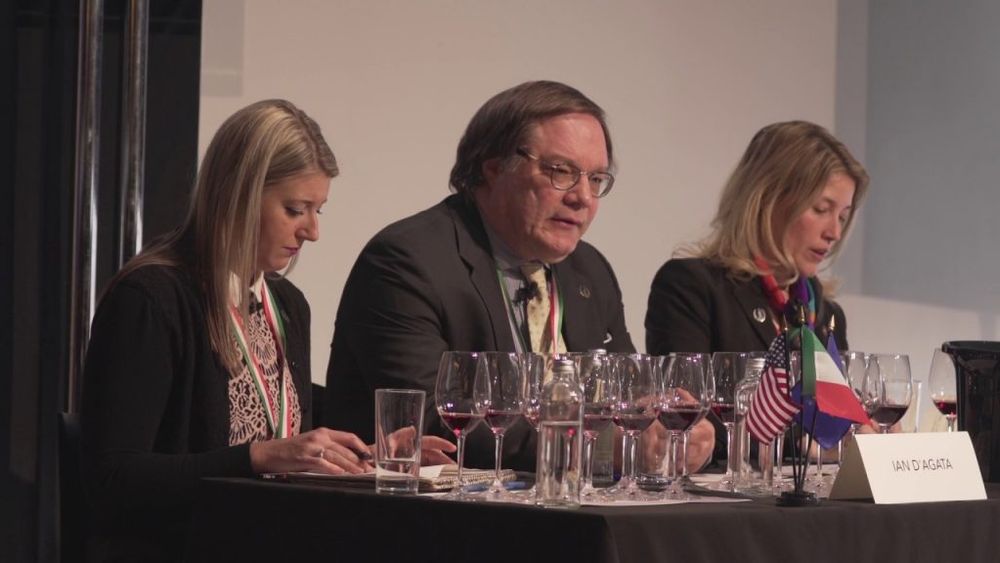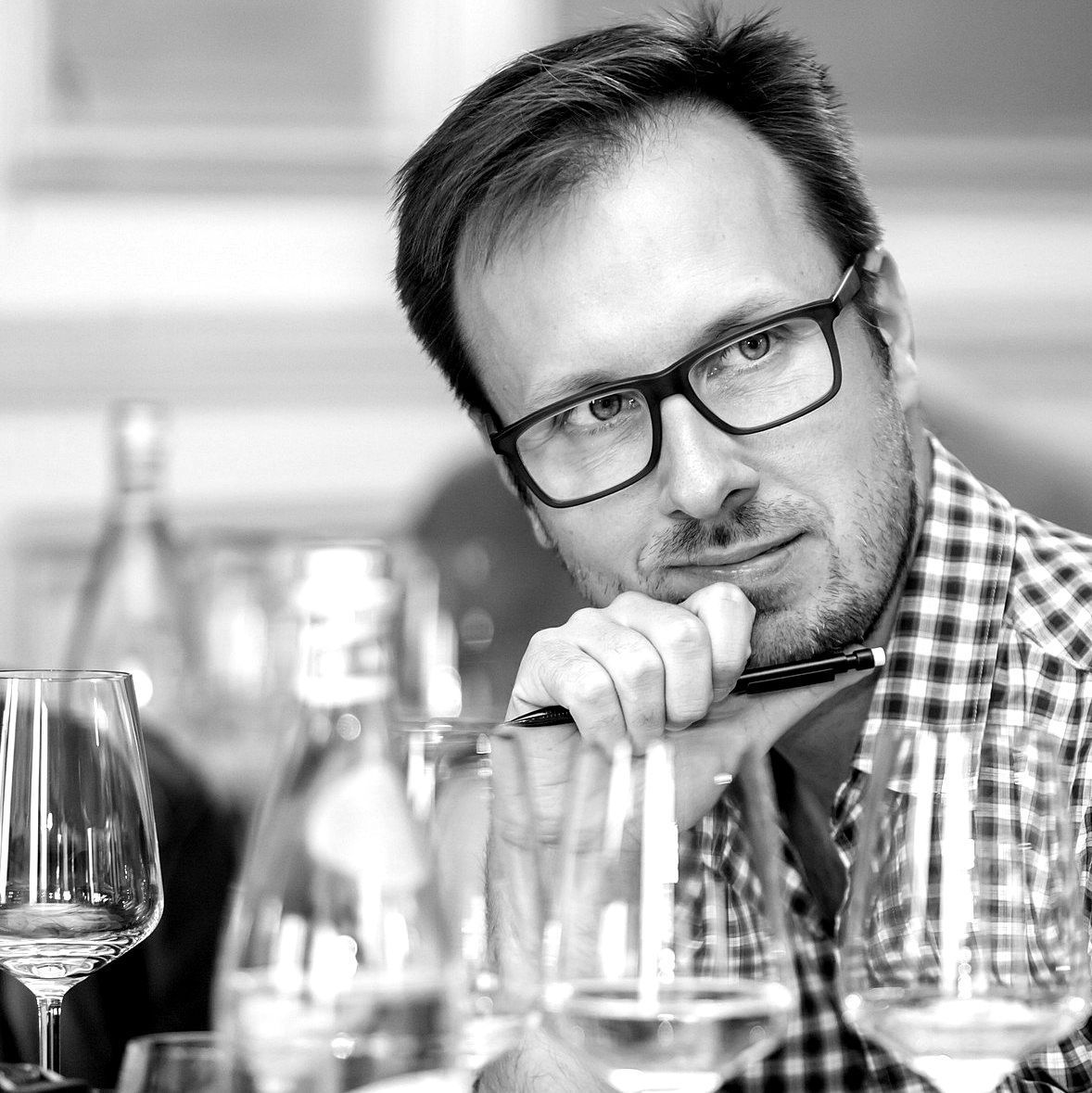As we go in to one of the busiest two weeks of the year of tasting and seminars and masterclasses, Anton Moiseenko looks at five ways we can all learn how to talk about wine in a way that we can all enjoy and get something out of.
It was my first experience of attending a wine seminar led by Ian D’Agata and it made me sad. Sad because I had not had the chance to go to one before. D’Agata, to put it mildly, does things differently. Robbie Williams? Placebo? Are you kidding me? Compared to D’Agata they are just data blips in the pop-culture ocean. In the rather boring world of public wine speaking D’Agata stands out, showing how wine communication really can be different.
If you are a person who has to talk and write about wine, then here are some recommendations based on just one hour in D’Agata’s presence:
1 Sense of humour is key
“You know, when we walk about Langhe — and it’s nobody’s fault, it’s only normal — Barolo really takes over. Even poor Barbaresco gets hammered,” says D’Agata as he starts a recent wine tasting during the Collisioni festival in the town of Barolo. I am smiling, I do! “Poor Barbaresco” gives birth to so many images in my head that I already know the headline for my next article.

D’Agata was one of the many attractions at the Collisioni festival
“I apologise if I’m going to be vulgar, but a wine-writing mentor of mine called it a slutty wine because everybody’s into it,” reflects D’Agata on the Pelaverga grape variety. Everyone bursts out laughing. It could be a stand-up wine comedy show if only D’Agata was standing. He is sitting, though, together with a panel of serious wine specialists in front of two dozen sommeliers, wine educators and trade people from all around the globe.
If he crossed the line then I loved it. Things like that remain in the memory forever, unlike the number of hectares under vine.
As a wine presenter or, should I rather say, promoter, D’Agata doesn’t spare anybody: winemakers, sommeliers, journalists. Everyone’s a target for his jokes. Why does it matter? Wine communication at large lacks what it needs most: self-reflection, irony and fun. Wine marketers are afraid that humour and fun could spoil the image of expensive bottles.
There is a notion that expensive bottles should be marketed seriously. This is partly true: some people have a sense of humour, others don’t. Some people have a sense of humour very different from yours, so one risks embarrassing them by, but on the other hand, take the automotive industry. Many-many-many car producers successfully use humour in their TV commercials and people seem to be quite happy about it.
For me joking is like drinking: it eases you into a more relaxed state of mind. Your muscles, diaphragm, all that. The wine world is filled with shy and modest people. Decent people, working on the soil.
They are not always natural storytellers, yet many wine journalists expect them to be. Guys, they are winemakers. You and only you are the storytellers. And this is exactly where D’Agata’s ability to bring them to life and make them talk is so important. He probably won’t teach them a sense of humour, but he will definitely add a funny touch to the discussion.
Many have no time for irony and self-reflection. D’Agata’s style probably makes much more sense when talking to wine journalists than to casual wine drinkers, who might end up taking the jokes at face value. It works magic for me, though.

Ian D’agata’s natural, funny, story telling style is a gift for the wine industry, says Moiseenko
2 There are no minor grape varieties
“The minute you call a grape variety minor, you’re shortchanging it. They are not minor, they are just different grapes and different wines that not so many people know,” claims D’Agata. This made me realise there are actually different types of wine knowledge. One is lying dead in one’s head. You can know all the things in the world about wine world and never be capable of sharing them or inspiring other people about them.
But with his profound knowledge of obscure and lesser-known Italian grape varieties, D’Agata is able to inject this information directly into your brain.
Merera, Pelaverga, Grignolino and many many other varieties are out there — waiting to be discovered. But discovering grapes is not about being fashionable or up-to-date, nothing like that. These varieties are so local, so embedded into the wine regions, their culture and history that discovering them is, in fact, discovering the history of the area. Many of them are a perfect match to local cuisine, and this is something to build their reputation upon.
3 Context is essential

Ciro Biondi: would you ask about cholesterol levels on a first date?
How many times have you been to an extremely technical wine tastings where technical terms like “soil pH”, “barrique toasting level” and “precipitation” are freely passed around? “Lost in translation” is the right phrase to describe such tastings, where technical details substitute the feelings, history, wine producers’ personality and cultural perspectives. While pH might be important in the winery’s lab, it’s probably not so much during the tasting. As Etna’s producer Ciro Biondi likes to put it: “Would you ask a beautiful woman on a first date about the cholesterol level in her blood?”.
What I learned from D’Agata is the importance of context. If nobody in the world knows the grape variety you’re talking about, what purpose does it serve speaking about acidity levels and steel tanks? Well, even for known grapes it doesn’t make much sense, but unknown grapes are extremely sensitive to that. To know the grape means to know the story. And D’Agata knows how to tell it all in just five minutes.
4 Giving live feedback to winemakers is crucial
It’s during D’Agata’s session that I discovered you can speak simultaneously two languages when conducting wine presentations. You know those events — winemakers that don’t speak your language get an extremely boring consecutive interpreting which basically doubles the time of the event while reducing twice the amount of information flowing to the public. Well, D’Agata knows how to break the vicious circle — just speaking freely two languages and switching back and forth without asking anybody and without waiting for any approval of the audience, he is saving a lot of time for things that really matter.
There’s more important stuff to that: winemakers NEED our feedback. Too many wine tastings are held in rooms full of silence where a winemaker talks and when he asks: “So what do you think about the wine?” he gets nothing. People are looking down for many reasons: some are just shy, others don’t feel confident enough to step up and speak first. Those who talk will sometimes end up in flattery which is not good news for anyone. The winemaker thinks he has made a great wine and people feel just dumb since they want to be polite.
With D’Agata it’s all about asking the audience direct questions (and at the same time introducing people to winemakers). “Hey, there’s Mr.X, a sommelier from San Francisco. What are the perspectives of this wine in your city?” One has no other choice but to talk. It also makes D’Agata’s tastings a two-way street: everybody’s driving, everybody’s happy. “And then I’m going to introduce the President (of the Consorzio) and let him say “hi”,”— jokes D’Agata.
5 Even a five minute speech can be a game-changer
With wine it’s very easy to tell the story in five minutes. In fact, you could tell a story in 15 seconds: I mean, if the wine is right. A great wine presentation is not the longest one, neither it’s the most technically savvy one. It’s the one that makes you dig things out yourself. Later, at home, at work, anywhere. It just takes five minutes to ignite the interest. And with D’Agata I learned how important it is: keeping to the point, giving a small and funny review of the region’s history and the position of the grape, throw in a joke and there you are.
I still have to learn how to do that.
* Anton Moiseenko is a Moscow-based freelance wine journalist writing both in Russian and English. He is also consulting retail chains, wineries and wine importers on wine communications and media strategies. Twitter: @AntonMoiseenkol










































